Brands and creators have never produced so much content. However, despite sometimes massive audiences, few manage to monetise their community in a sustainable way.
Many succeed in capturing attention, generating traffic and accumulating subscribers - but without transforming this audience into a solid economic lever.
Because an audience can be measured, whereasa community enhances itself. An audience watches, a community acts. And it is precisely this ability to monetise your community, It's not just about attracting visitors, it's about making the difference between visibility and influence, between communication and impact.
Visibility is no longer enough: it attracts, but does not create loyalty. It exposes, but does not transform.
In an environment where attention is becoming volatile and competition intense, monetise your community is not an option: it's a requirement. marketing strategy for independence and growth.
Creating a community means moving from a distribution approach to a relationship approach. It's about building a space where we share, where we exchange, where members become part of a brand universe. And it is this transformation - from audience to community - that makes the monetization not only possible, but natural and sustainable.
From audience to community: the keys to monetising your community over the long term
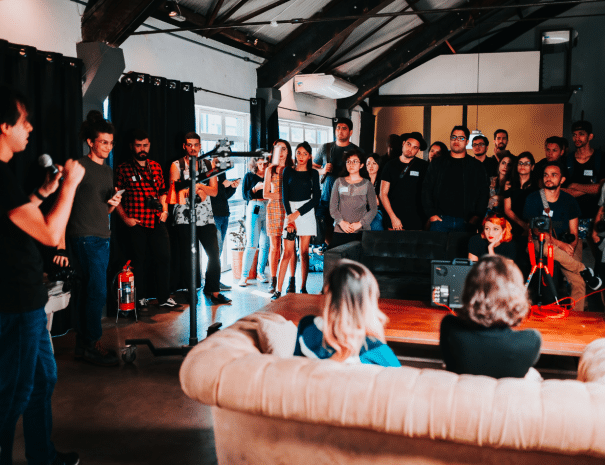
For years, brands and the media have built their strategy on the logic of distribution.
The aim is to reach as many people as possible, maximise reach, increase awareness... and hope to turn this audience into customers.
The audience was the grail, the absolute KPI. The bigger the audience, the more effective the strategy. But this approach, based on quantity, is now showing its limitations.
A audience, by definition, remains an audience exposed to a message. It consumes content, sometimes reacts to it, but does not make a lasting commitment. They are volatile, dependent on platforms and algorithms.
In BtoC, this means consumers who are attracted by campaigns but have little attachment to the brand. In B2B, it means prospects who get information, download a white paper, attend a webinar... and then disappear.
The real creation of value is no longer to be found in the exhibition, but in the relationship, proximity and exclusivity. And this relationship is not built with an audience, but with a community.
The community is based on trust, reciprocity and proximity. Where the audience watches or follows, the community interacts and engages. Where the audience listens, the community expresses itself.
For brands, moving from audience to community means changing their approach: no longer “talking to”, but “talking with” and «doing with».
This semantic shift illustrates a profound transformation in marketing. We're no longer just selling a product or an idea, we're sharing a world, a cause, an experience.
And this experience becomes the basis of a sustainable monetisation, because it is based on a strong emotional bond that is difficult to copy.
It is this link - this relational capital - that enables the brand to create higher-value offers: subscriptions, exclusive access, clubs, training, events or partnerships.
In other words, monetise your community, It means moving from an economy of attention to an economy of trust and experience. You create a community experience, a brand experience.
Assess the maturity of your audience before monetising your community
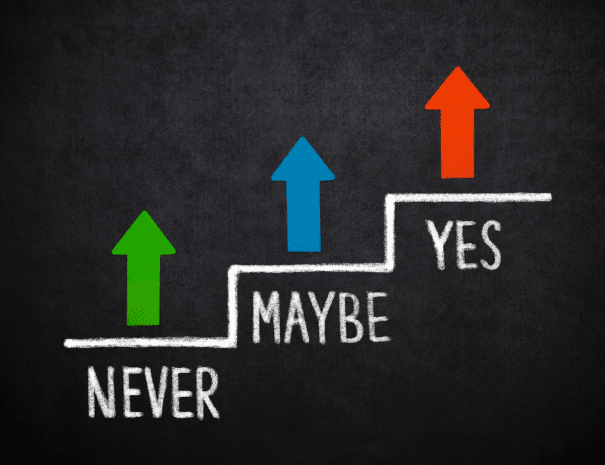
Before wanting to monetise your community, it is essential to understand whether its audience is ready to take this step. You can't create a profitable community simply by making a marketing decision. It is built gradually, as the link between the brand and its members is strengthened.
An immature audience is one that consumes content without interacting with it.
They watch, like and sometimes share, but without any real commitment. These audiences are numerous, but fragile: they depend on the rhythm of publications, algorithms and current trends. In this case, any attempt to monetise them is likely to fail for lack of a sufficient link.
Conversely, a committed audience is showing clear signs of community maturity They comment, react, take part in events, ask questions and suggest ideas.
These behaviours reflect a need for proximity, a desire to belong. It is the fertile ground on which a community can grow.
BtoC, This maturity is often expressed by fans or customers who have followed the brand for a long time, are familiar with its codes, defend its values and share its content spontaneously.
BtoB, This is expressed through a network of customers, partners and experts who regularly exchange ideas, take part in meetings or co-construct projects with the brand.
In both cases, the audience becomes a living base, ready to evolve into a community model.
It is at this precise moment that the monetization becomes possible, not as a commercial act, but as a natural extension of the relationship.
Members no longer feel that they are “paying” for access to content, but that they are ’paying' for access to content.’investing in an experience, in a sense of belonging. They join a community because it brings them value, connection and meaning.
To identify this balance point, it is useful to observe the dynamics of your audience: the commitment rate, the recurrence of interactions, the nature of exchanges, and the extent to which initiatives come from the members themselves.
These indicators reveal the potential of community monetisation. The more the community acts autonomously, the more it is ready to organise itself around an offer: subscription, premium club, platform or partner programme.
It is in this analysis phase that the difference is made between a brand that “sells to its audience” and a brand that creates value with its community.
One seeks to convert, the other to build. And in a context where loyalty is earned through trust, This distinction makes all the difference.
Community monetisation models
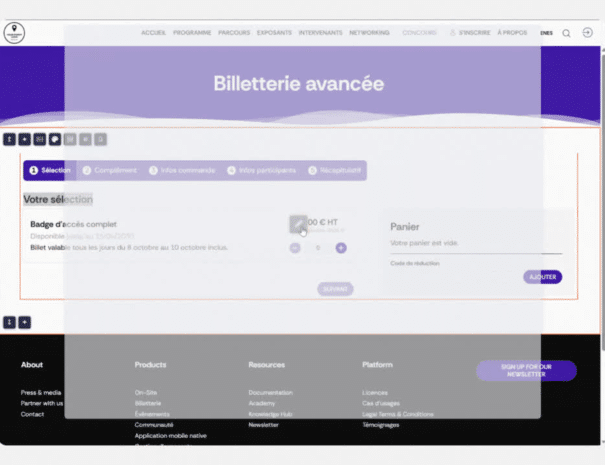
Once the community marketing strategy defined, the structuring the community and the expectations of future members the question becomes one of model.
How to monetise your community without betraying its original promise? How can we create economic value while reinforcing relational value?
The answer lies in consistency The right model is one that naturally extends the experience of members.
Subscription or membership
Probably the most common, it is based on a simple logic: privileged access to a community through a subscription or membership (monthly, quarterly, annually, etc.).
A brand, a media outlet or an association offers its members an exclusive space such as a community platform or a community app We offer a range of personalised services that are as close as possible to the brand's universe, with premium content (news, articles, videos, podcasts, documents, etc.), meetings, training courses, advantages and customised services.
This model works just as well for a BtoC brand (such as a club of enthusiasts, a lifestyle brand or a community of users) as it does for a BtoB brand (professional network, circle of expertise, shared innovation platform).
In both cases, members don't just pay to consume: they invest in belonging to a group that brings them value.
Events
Physical or digital meetings (conferences, trade fairs, workshops, afterworks, private parties, product launches, etc.) are all opportunities to create links while generating direct or indirect income.
Ticketing, premium offers and partnerships associated with these events enhance the experience. The event then becomes a cornerstone of community monetisation It consolidates commitment, amplifies visibility and nurtures loyalty.
Of course, you'll need a event management tool to orchestrate these community experiences.
Sponsorship and brand partnerships
Particularly interesting for the media and influencers. Here, the brand leverages the strength of its community with third parties. The sponsor no longer pays just for an audience, but for access to a committed, credible, influential community with the potential to act as ambassadors.
This approach transforms monetisation into a lever for collaboration: it makes it possible to finance content production and improve the member experience, while offering the partner contextualised and legitimate visibility.
Training and knowledge transfer
In professional circles as well as in communities of enthusiasts or learning communities, sharing expertise has a high perceived value.
Offering workshops, masterclasses, support programmes or skills enhancement courses creates income while strengthening the community's mission.
Here again, the monetising your community is not experienced as a purchase, but as mutual enrichment.
Calling on a managing and leading a learning community becomes crucial for sharing your extensive content with your members = articles, videos, podcasts, documents...
Hybrid models
Finally, some communities find their equilibrium in hybrid models.
They combine several sources of revenue: subscriptions + events + sponsorship, for example. This mix offers both stability and diversity. It secures growth while maintaining consistency between the brand, its audience and its partners.
In all cases, the success of a community monetisation is based on a central principle: value must always flow in both directions.
A brand that knows how to listen to, involve and recognise its community creates much more than income: it builds trust..
And in a world where loyalty is measured in terms of churn reduction and the customer retention, commitment becomes a precious asset.
Building a balanced and sustainable community monetisation model

The success of a community monetisation is not just measured in the short term.
What distinguishes an opportunistic approach from a long-term model is the brand's ability to strike a balance between economic value and relational value. In other words, monetise your community must not undermine the trust that is its strength.
That's why we now talk about« Community Building »It's all about building a sustainable community on solid foundations.
Sustainable monetisation is based on a logic of exchange. Members must feel that their contribution, whether financial, attention-grabbing or emotional, brings them an enriching experience in return.
This can be a sense of belonging stronger, access to exclusive advantages, participation in collective projects or the possibility of’learn and progress.
The challenge for the brand is to create a model where value flows in both directions: the more members get involved, the more they gain from being members, and the more the brand gains. a stronger community.
A living community is not just about an offer or a transaction, but about a a set of interconnected experiences and relationships.
Each lever (content, event, programme, partnership, etc.) contributes to a coherent whole. Visit monetization then becomes a natural extension rather than a bait-and-switch add-on.
The strongest communities operate on a principle of’circular economy The brand invests in the creation of value (content, tools, support), and members get involved and contribute in turn, generating revenue that is reinvested in improving the collective experience.
This virtuous circle transforms the community monetisation into a continuous commitment engine.
For the BtoC brands, This can mean developing experience clubs or exclusive offers that enrich the bond with loyal customers.
For the BtoB brands, This is often an opportunity to build a genuine professional hub, A place where partners, customers and experts come together to work on high added-value projects.
In both cases, the monetization is no longer based on the sale of a product, but on the creation of a lasting, contributory relationship.
Ultimately, the key is not to «charge» your audience, but to involve your community in an experience sincere and meaningful.
It is this cultural shift from transaction to collaboration that transforms a marketing strategy into a resilient business model.
Monetising your community: towards a new relationship economy?
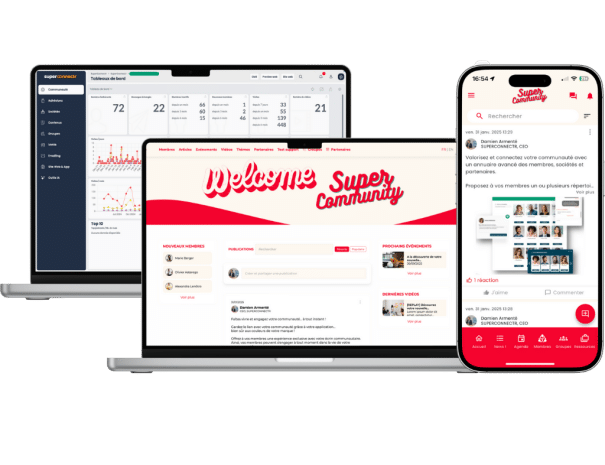
Monetising your community is no longer simply a question of income: it's a change of culture.
At a time when attention is fragmenting and audiences are becoming volatile, the real wealth of a brand no longer lies in its visibility, but in the solidity of its links.
It's no longer the size of the audience that counts, but the quality of the relationship it has with them.
Turning an audience into a community, It means rethinking the very way in which value is created. It's no longer just talking to an audience, but coexisting with them. It's no longer about selling a product, but about build an experience. And in this experience, monetisation becomes a means of strengthening the link, not of monetising it.
This new relationship economy is based on trust, transparency and reciprocity. Brands that succeed in monetise their community without distorting it are those who understand that a financial contribution is not a purchase, but a form of commitment.
Members don't pay to consume, they participate in a project, a vision, a shared history.
At a time when companies are seeking to reconcile performance, meaning and independence, the community monetisation is emerging as a model for the future. It frees brands from dependence on platforms, while creating more sustainable value based on human relationships.
Perhaps we are now witnessing the end of the “attention economy” and the emergence of a new 'attention economy'. relationship economics, where value is no longer measured in clicks, but in trust?
FAQ (Frequently Asked Questions) - Everything you need to know about monetising your community
You are discovering community monetisation or are you looking to structure your strategy? Here are the answers to the most frequently asked questions to help you better understand how to monetise your community, transform a audience into a genuine driver of value and build a sustainable business model based on relationships.
What is community monetisation?
The monetising a community consists of transforming the relational value created between a brand and its members into economic value.
Unlike traditional advertising, the aim is not to sell visibility, but to building trust by offering subscriptions, exclusive quotes, premium services, events, training and partnerships.
It's a strategy based on reciprocity: members receive an enriched experience, the brand benefits from a sustainable source of income.
What is the difference between an audience and a community?
A audience is a group of people exposed to a message. They listen, watch and consume content.
A community interacts, exchanges and contributes.
Audience is measured in reach, community is measured in engagement.
For monetise effectively, It is therefore essential to move from a distribution approach to a relationship approach: this link is the basis of any sustainable monetisation.
Why has monetising your community become essential?
Because the visibility model alone is no longer enough. Algorithms are changing, platforms are controlling reach, and audiences are increasingly volatile.
Monetising your community allows you to secure your relationship with your audience, create recurring income and increase your independence.
It's also a way of deepening the relationship: paying members are often the most committed, the most loyal and the most contributors.
What are the main monetisation models?
The models of community monetisation vary according to the type of audience and the brand's positioning:
Subscription or membership (access to content, benefits or an exclusive area, etc.)
Events (meetings, masterclasses, trade fairs, premium experiences, etc.)
Sponsorship and brand partnerships
Training and sharing expertise
Affiliation and recommendation
Success does not depend on the model chosen, but on its consistency with the needs of the community and the value offered.
Can a small community be monetised?
Absolutely. A community doesn't have to be huge to be profitable. What counts is the commitment rate and the quality of the link between the brand and its members.
Many niche communities (in the automotive, sports, tech, cultural or entrepreneurial sectors) generate significant revenue thanks to strong relationships and tailored offers.
It's better to have 500 active members than an audience of 50,000 passive people.
How do you know if your community is ready to be monetised?
A community is ready to be monetised when it shows signs of strong commitment: regular participation, spontaneous interactions, constructive feedback, mutual support between members, requests for exclusive content or events.
These behaviours reflect a need for a link and an established level of trust. Monetisation then becomes natural, because it is seen as a way of enriching the experience, not limiting it.
What mistakes should be avoided when monetising a community?
The most common errors are :
Seeking to monetising too early, before creating a committed base.
Imposing a business model without listening to members' expectations.
Forget about transparency regarding the destination of income.
Confusing monetisation with marketing.
The community monetisation is based on clarity, trust and shared value.
What tools should you use to monetise your community?
The choice of community platform is crucial. Solutions such as SuperConnectr, allow you to host, manage and lead a community, while integrating monetisation functions: subscriptions, ticketing, premium space, etc.
SuperConnectr combines a showcase and media site to attract, a community platform to hire and a community mobile application for a seamless experience at all times 100% in your organisation's colours.
A a tool for monetising your community an ideal way for brands, content creators and associations to manage their members, rules, events and offers.
Discover the SuperConnectr community platform!
An All-in-one Community Platform, 100% personalised with your Brand identity.
Give the members of your network a community web Platform and mobile App with your Brand to manage, engage and promote your community!


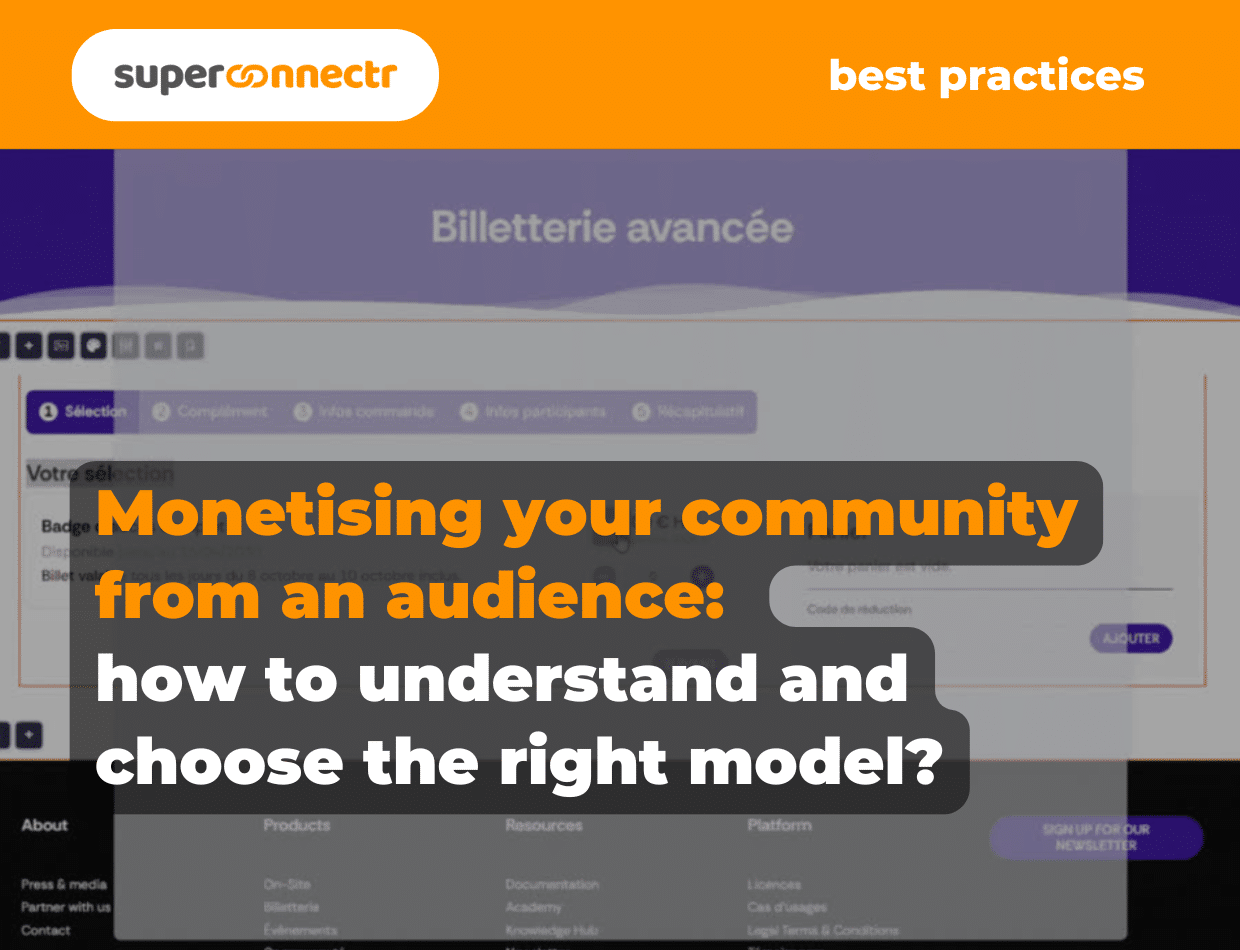
Leave a Reply